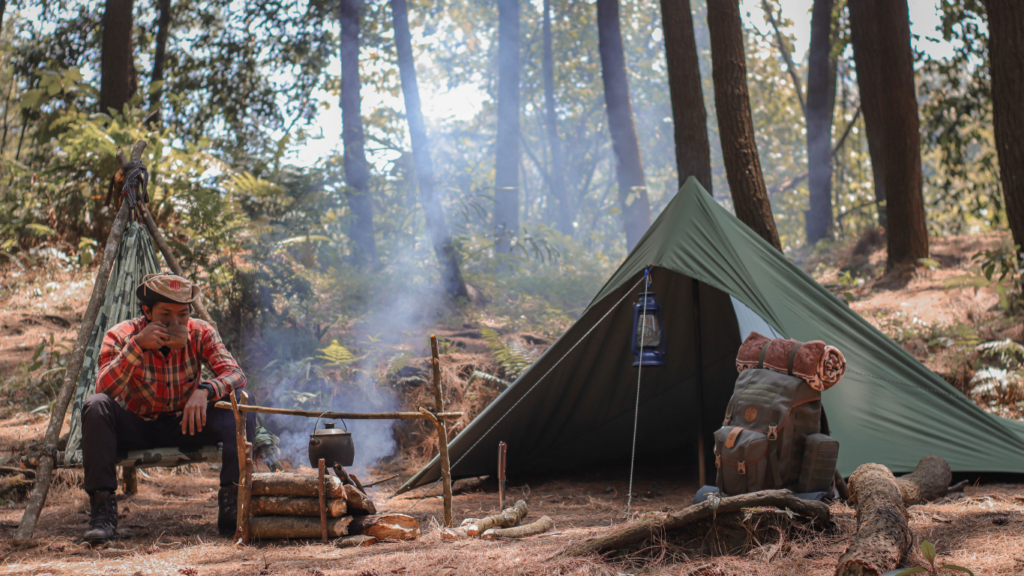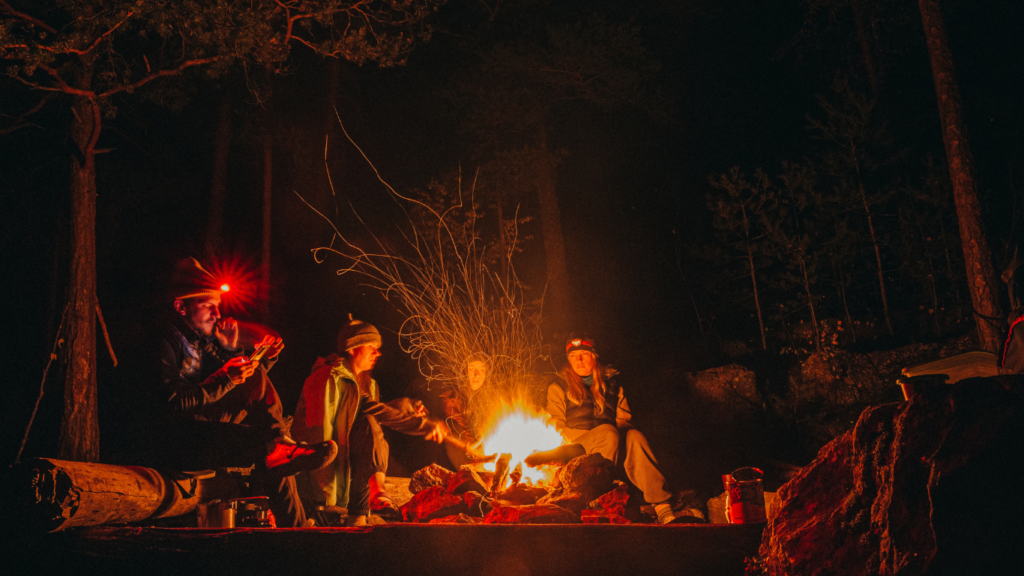Understanding the Importance of Night Survival
Night survival is critical for anyone spending time outdoors. Extreme temperatures can lead to hypothermia, which is a dangerous condition where your body loses heat faster than it can produce it. According to the CDC, hypothermia begins to set in when your body temperature drops below 95°F. It’s vital to maintain body heat to prevent this.
In addition to temperature concerns, visibility drastically decreases at night. This increases the risk of accidents and makes it harder to find your way. Using headlamps and reflective gear mitigates these risks. The Wilderness Medical Society notes that appropriate lighting can reduce night-time injuries by up to 50%.
Wildlife encounters pose another challenge. Predators like:
- wolves
- bears
- large cats
become more active at night. Keeping food stored properly and making noise can reduce these risks, as indicated by the National Park Service guidelines.
Finally, psychological factors play a significant role. Nighttime evokes fear and anxiety, which can affect decision-making. Preparing mentally by staying calm and having emergency plans in place enhances your ability to survive.
Preparing for Nighttime Conditions
Optimizing your environment is crucial when surviving the night outdoors. Proper preparation ensures you stay warm and safe despite the challenges.
Choosing the Right Clothing
Wearing appropriate clothing is essential for maintaining body heat. Multiple layers help trap warm air and offer adjustable insulation. For example, thermal underwear, a fleece jacket, and a waterproof outer layer create an effective combination. Materials matter, too; synthetic fibers and wool excel at moisture-wicking, while cotton retains moisture and poses a risk. Accessorize with a thermal hat, gloves, and thick socks to minimize heat loss.
Essential Survival Gear
Carrying essential gear drastically improves nighttime safety. A high-quality sleeping bag rated for low temperatures provides vital warmth. Portable shelters, like tents or bivy sacks, offer protection from wind and precipitation. Insulated sleeping pads prevent heat loss through the ground. Reliable light sources, such as headlamps with extra batteries, ensure visibility. Fire-starting tools, like waterproof matches or firesteel, help create warmth. An emergency whistle and multi-tool add layers of security.
Building a Safe Shelter
In night survival scenarios, a properly built shelter is crucial for warmth and protection. Let’s explore the essential steps to construct an effective shelter.
Selecting the Location
Choose a location that offers natural protection. Look for areas shielded from wind, like behind rock formations or dense vegetation. Avoid low-lying areas where cold air collects and valleys where water gathers. Ensure the spot is free from hazards like falling branches or flood zones. Prioritize locations with nearby resources like firewood and water.
Constructing the Shelter
Start by gathering materials. Collect branches, leaves, and pine needles to create insulation. Use sturdy branches for the frame, ensuring it can support the weight of any covering materials. Construct a frame structure, leaning it against a stable anchor point like a tree. Cover the frame with leaves, pine needles, or a tarp if available. Add extra layers to enhance insulation and block wind. Always create a small entrance, keeping it covered to retain heat.
Maintaining Warmth

Ensuring warmth throughout the night is critical for survival. To generate heat and block cold, follow these essential strategies.
Building and Maintaining a Fire
A fire provides warmth and a psychological boost. First, select a safe, sheltered location to limit wind interference and spread risk. Arrange tinder, kindling (small twigs), and fuelwood (larger logs) in a teepee structure. Use a reliable ignition method, such as matches or a fire starter, to ignite the tinder. Gradually add kindling until a steady flame exists, then incorporate fuelwood to sustain the fire. Maintain the fire regularly by adding logs and ensuring ample oxygen flow.
Insulating Your Shelter
Proper insulation prevents heat loss, keeping the interior warm. Add layers of natural materials like leaves, grass, and pine needles between the shelter walls. Lay a thick bedding of leaves and branches on the floor to avoid direct contact with the cold ground. Seal gaps and openings with additional insulation to block cold air entry, ensuring heat retention. A well-insulated shelter creates a significant barrier against the cold.
Staying Safe from Wildlife and Other Dangers
Animals and environmental hazards pose significant threats during nighttime survival. Protecting food sources and staying alert to surroundings enhances safety.
Safeguarding Food Supplies
Store food in sealed containers to keep scents contained and wildlife at bay. Hang the containers from a tree branch at least 10 feet off the ground and 4 feet from the trunk to prevent animals like bears and raccoons from reaching them. Additionally, move food storage at least 200 feet from the sleeping area to minimize attraction of predators. Bear-proof canisters and odor-proof bags offer extra security.
Being Aware of Environmental Hazards
- Select a campsite away from potential natural dangers like falling branches, rockslides, or flood-prone zones.
- Evaluate the ground for visibility of animal tracks or dens and avoid these areas.
- Check weather forecasts for sudden changes that could create hazardous conditions.
- If in snake territory, shake out shoes and bedding before use.
- Inform someone of your location and expected return to improve safety further.
Emergency Signals and Communication
Staying warm and safe at night also involves effectively signaling for help in emergencies. This can be achieved using various methods, including visual and audible signals and modern technology.
Using Visual and Audible Signals
Visual and audible signals are vital for attracting attention. Use a flashlight to create a recognizable pattern like three short flashes, three long flashes, and three short flashes (SOS). Raise a bright-colored item such as a jacket during daylight to increase visibility. To generate sound, blow a whistle in intervals of three as it’s a universal distress signal. These methods improve the chance of being spotted or heard by rescuers.
Making Use of Technology
Technology increases survival odds by enabling efficient communication. Carry a fully charged mobile phone to contact emergency services if there is a signal. Use GPS devices for accurate location sharing, even in areas with poor cell coverage. Personal locator beacons (PLBs) offer one-touch distress messaging to alert rescue teams. Ensure that these devices are waterproof and have long battery life to function effectively in harsh conditions.





